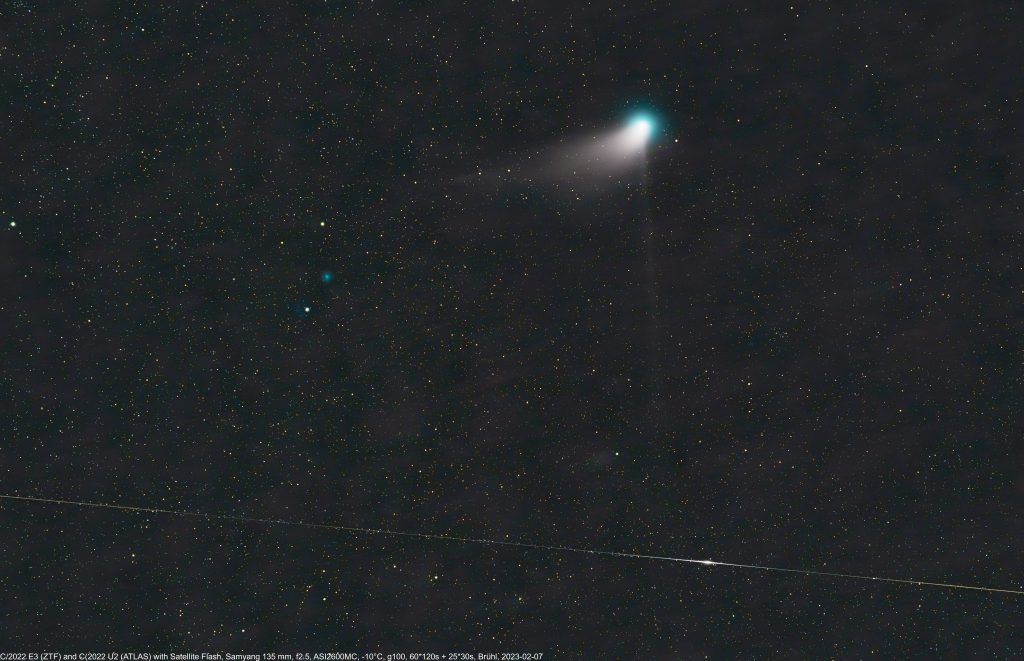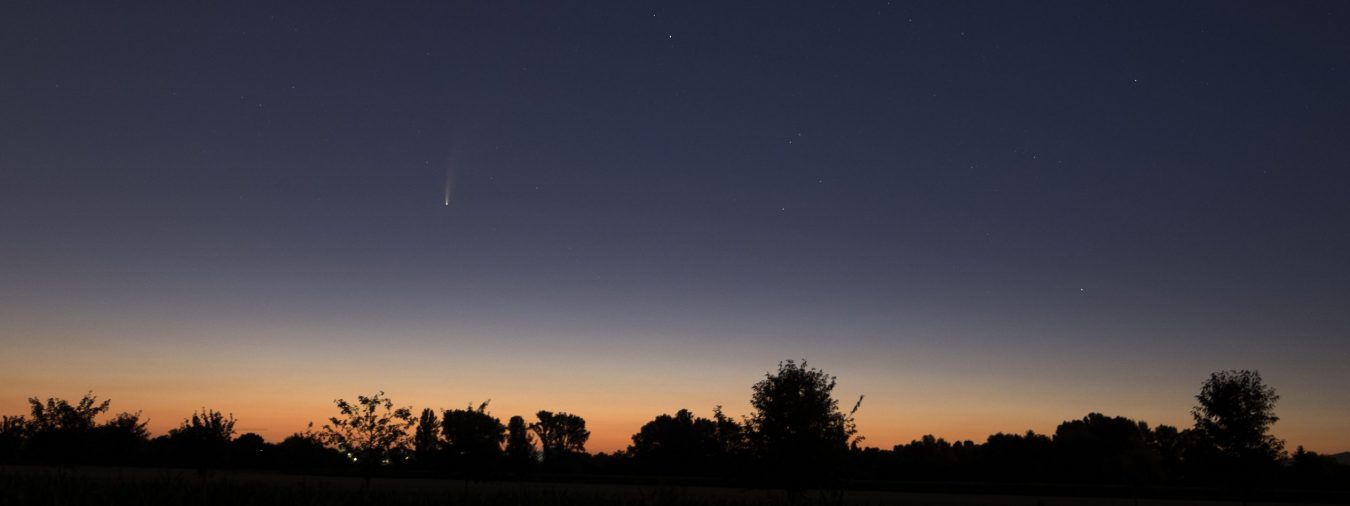
My image shows a unique constellation, comet C/2022 E3 (ZTF) and comet C/2022 U2 (ATLAS), which was discovered in October 2022. Also, a satellite is lighting up. E3 (ZTF) now only shows a faint, downward-pointing tail of gas, but also a brighter tail of dust. It was closest to Earth at the beginning of February 2023 and is now on its way back to the edge of our solar system.
Comet C/2022 U2 (ATLAS) shines greenish between the yellow star Haedus I and the blue-white star Haedus II. I discovered it purely by chance in my photos. Initially I thought it was a fragment of E3 (ZTF). U2 (ATLAS) was discovered on 25 October 2022 by ATLAS, an asteroid impact warning system of the University of Hawaii. ATLAS automatically scans the sky several times a night for moving objects. U2 (ATLAS) has already been at perihelion, the closest point to the sun, in January and it will visit us again in about 1000 years.
Next to the two comets, a bright flare lasting only a few seconds can be seen at the bottom. It is caused by the reflection of sunlight off a passing object, usually a satellite. In contrast to the stars the satellite moves evenly across the sky. When it is illuminated by the sun, it is visible to us on earth as a small point of light. Its brightness slowly increases until it briefly flashes when the sunlight is directed towards us for a few seconds by highly reflective parts of the satellite. It then dims again.
